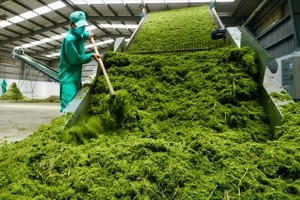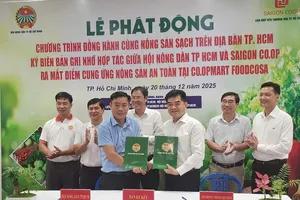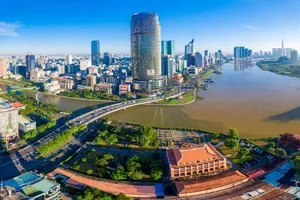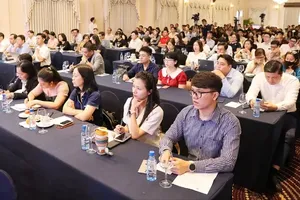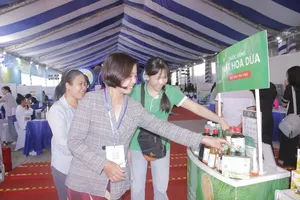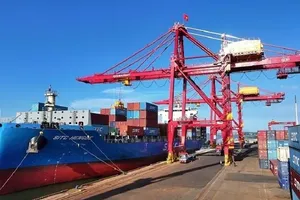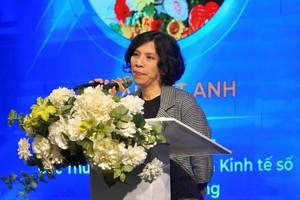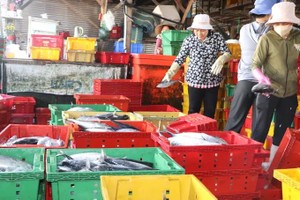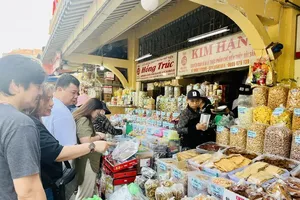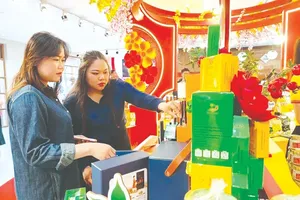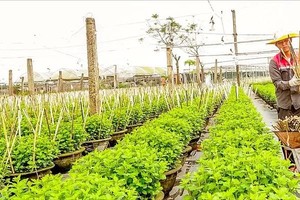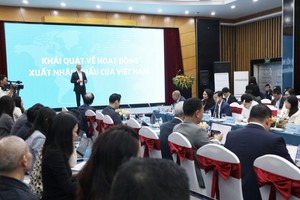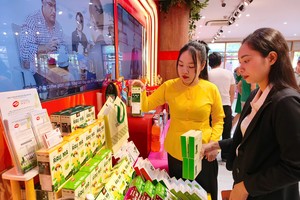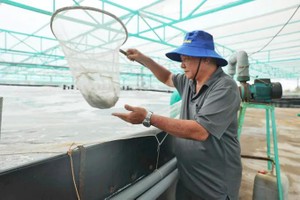The Free Trade Agreement between Vietnam and South Korea was expected to help economic growth in Vietnam to rise by 1.47-3.22 percent and in South Korea from 0.19-0.74 percent.
Since the establishment of diplomatic relations in December 1992, two-way trade between Vietnam and South Korea has climbed 36 times from US$0.5 billion to $18 billion in 2011. Last year, South Korea was the fourth largest trading partner of Vietnam while Vietnam was the eighth biggest importer of South Korea.
However, trade gap between the two countries surged from $1.7 billion in 2000 to $8.4 billion in 2011.
Vietnam mainly imports machinery, equipment, raw material for garment and textile industry, shoe leather, petroleum, oil, steel, and plastic while exporting minerals, raw materials, footwear, agro-aqua-forestry products, and wooden furniture. The remarkable feature in the two countries’ trade relations is that goods structure has clearly no direct competition.
Until December 20, there were more than 3,100 foreign direct investment projects from South Korea with a total registered capital of $24.5 billion, the highest among 11 investors in the number of projects, and the second largest in total registered capital. During the same period, the implemented capital from South Korea was $8.3 billion, standing at second place behind Taiwan.
Although there was no detailed assessment on the commercial impact when the two parties signed the agreement, free trade agreement between ASEAN and South Korea(AKFTA), which started in 2007, showed that Vietnam had advantages in exporting tea, pepper, coffee, and fruits. However, South Korea’s commitment for these commodities was limited. Many products of Vietnam did not meet quarantine regulations so exports to South Korea have not been as high as expected.
The implementing of AKFTA has helped improve export turnover of Vietnam for seafood and garment products but exports of farm produce has remained low. Although Vietnam has seen an increase in export turnover, the country has not fully exploited the potential of the free trade agreement.
Many key export products of Vietnam enjoy low tax rate or zero percent tax rate such as raw material and farm produce. Meanwhile, machinery, equipment, and electronic products which receive tax incentives were in smaller proportions. Benefits from low tax rate are not enough to attract firms as costs for certificate of origin, customs procedures, have increases. Meanwhile, under the double impact from WTO commitments and FTA, import of machinery, equipment, and electronic products have been in greater proportion due to low tariffs. Many FDI companies switched from manufacturing to importing as they no longer received protective tariff while distribution markets opened according to WTO agreements.
These shortcomings show that Vietnam has not initiated processes to take advantage of the opportunities brought by the agreement, leading to a huge trade gap. The country also has not created changes in structure of export commodities while regulations, technical standards, and intellectual rights have not been properly put into place.
Starting this year, Vietnam will slash tax rates to very low levels until 2015. If Vietnam fails to meet standards, the country will face enormous difficulties in bridging the trade gap, especially when import tariffs from South Korea and Japan are lowered.
